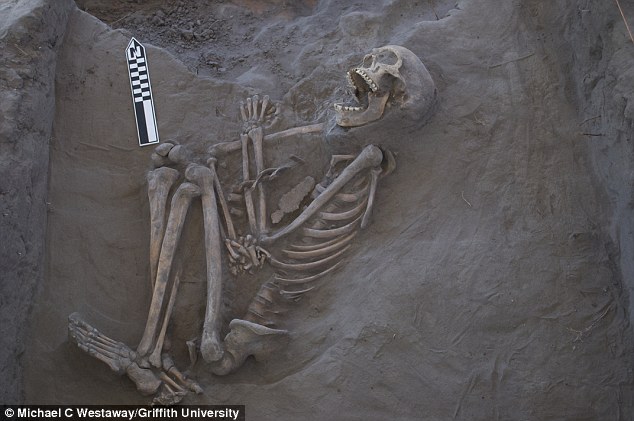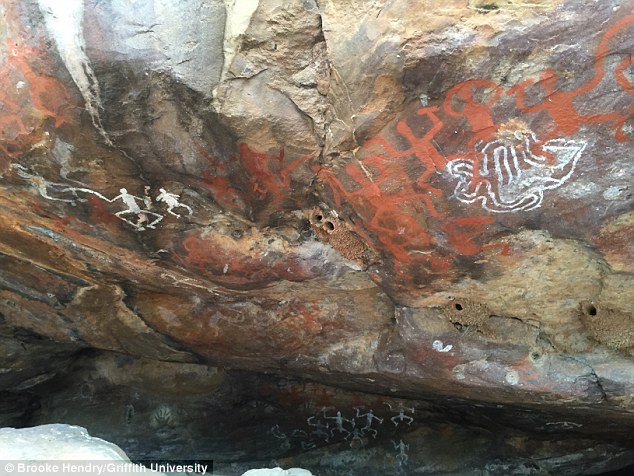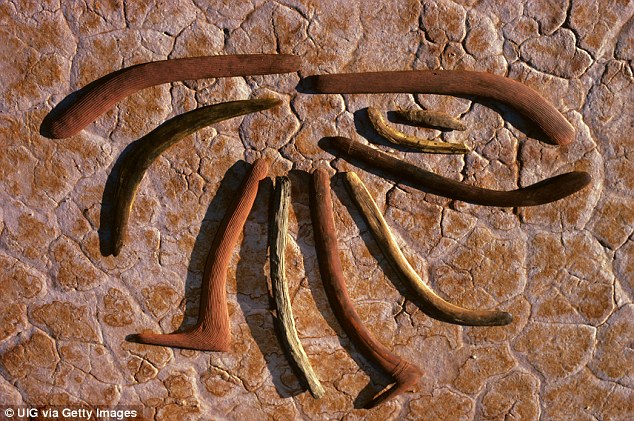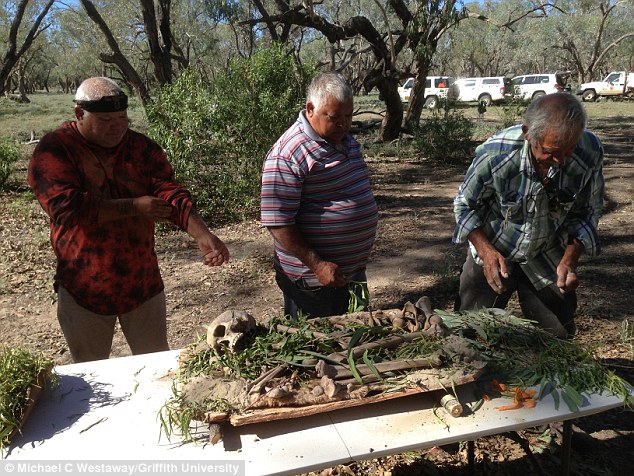DepthReading
The deadly history of boomerangs: Analysis of 800-year-old skeleton found in Australia suggests these tools were once used as weapons
A macabre discovery on an Australian riverbank has shed new light on the powerful wooden weapons of ancient Aboriginal tribes.
The skull of a skeleton found two years ago is marred by a long gash, initially thought to be the result of a fatal blow from a sharp metal blade – but, analysis of the remains reveals this occurred long before the Europeans arrived to the region with these types of tools.
In a new study, researchers say a fighting boomerang or a wooden weapon known as a ‘Lil-lil’ may instead be to blame, suggesting the Aboriginal people once fought deadly battles between themselves.

The skull of a skeleton found two years ago is marred by a long gash, initially thought to be the result of a fatal blow from a sharp metal blade – but, analysis of the remains reveals this occurred long before the Europeans arrived to the region with these types of tools
The ancient victim found at a burial site in New South Wales died in the 1200s, roughly 600 years before the Europeans began to colonize Australia, National Geographic reports.
While little is known about the relationships between the Aboriginal tribes before this era, the newly found remains – coupled with an earlier discovery of a skeleton with human-inflicted lethal injuries – indicates there may have been conflict among these peoples.
These findings are discussed in a paper published to the journal Antiquity.
After its discovery in 2014 by William Bates, a member of the Baakantji, the skeleton was named ‘Kaakutja,’ meaning ‘older brother.’
Researchers identified a long facial wound caused by a sharp weapon, along with two healed injuries in the skull.
They also noted that some of the ribs had been broken, and a segment of bone was hacked from the upper arm, according to National Geographic.
Kaakutja’s ancient wounds ‘exhibit evidence of fatal trauma, of a kind normally indicative of sharp metal weapons, yet the burial dates to the mid thirteenth century – 600 years before European settlers reached the area,’ the authors wrote.
The researchers questioned, ‘Could sharp-edged wooden weapons from traditional Aboriginal culture inflict injuries similar to those resulting from later, metal blades?’

As boomerangs could be as large as 18 inches long, a weapon of this kind may have been responsible for the large wound across the skeleton’s face. And just near the burial site, the team also discovered rock art depicting people wielding shields, clubs, and boomerangs

Their investigation revealed that this likely was the case; the team found that sharp club-like weapons known as ‘Lil-lils’ and hooked fighting boomerangs called ‘Wonna’ could have caused the injuries observed in Kaakutja. Various types of boomerangs are pictured
Their investigation revealed that this likely was the case; the team found that sharp club-like weapons known as ‘Lil-lils’ and hooked fighting boomerangs called ‘Wonna’ could have caused the injuries observed in Kaakutja.
According to the study, ‘both have blades that could fit within the dimensions of the major trauma and are capable of having caused fatal wounds.’
As boomerangs could be as large as 18 inches long, a weapon of this kind may have been responsible for the large wound across the skeleton’s face, National Geographic explains.
And just near the burial site, the team also discovered rock art depicting people wielding shields, clubs, and boomerangs.
Boomerangs have long had various uses, from digging to making music – but, they’ve also been used to butcher animals, and the new discovery sheds additional light on the deadly side to this tool.

After its discovery in 2014 by William Bates, a member of the Baakantji, the skeleton was named ‘Kaakutja,’ meaning ‘older brother.’ Pictured above, three Barkindji men prepare the remains for reburial
Category: English
DepthReading
Key words:
